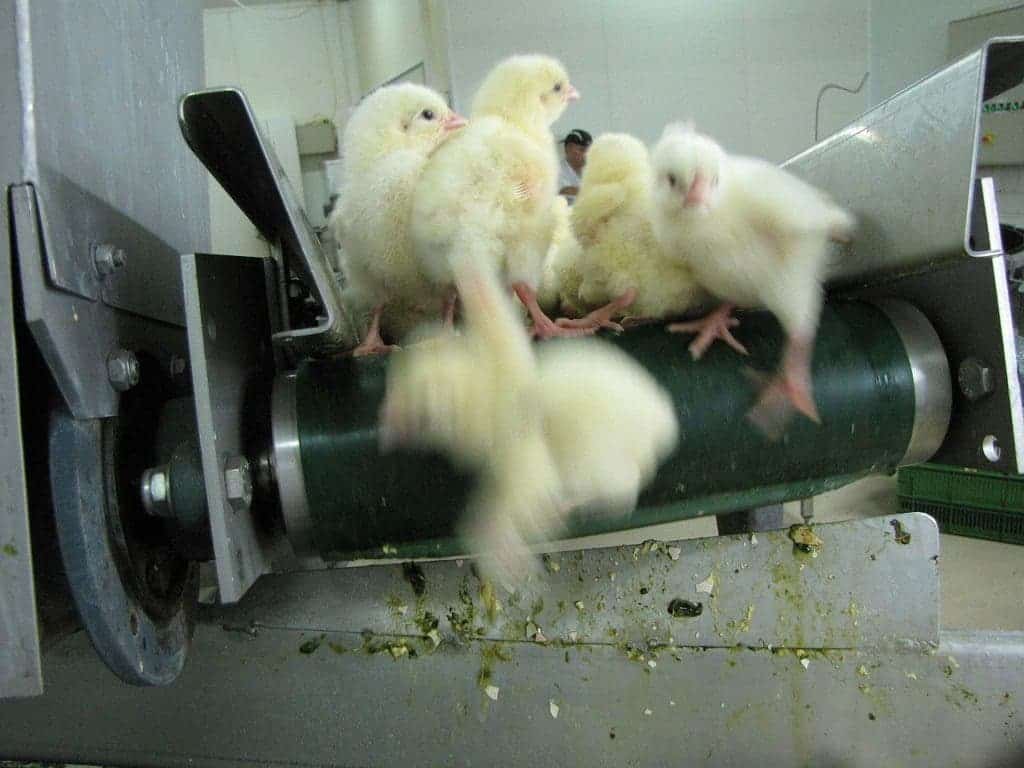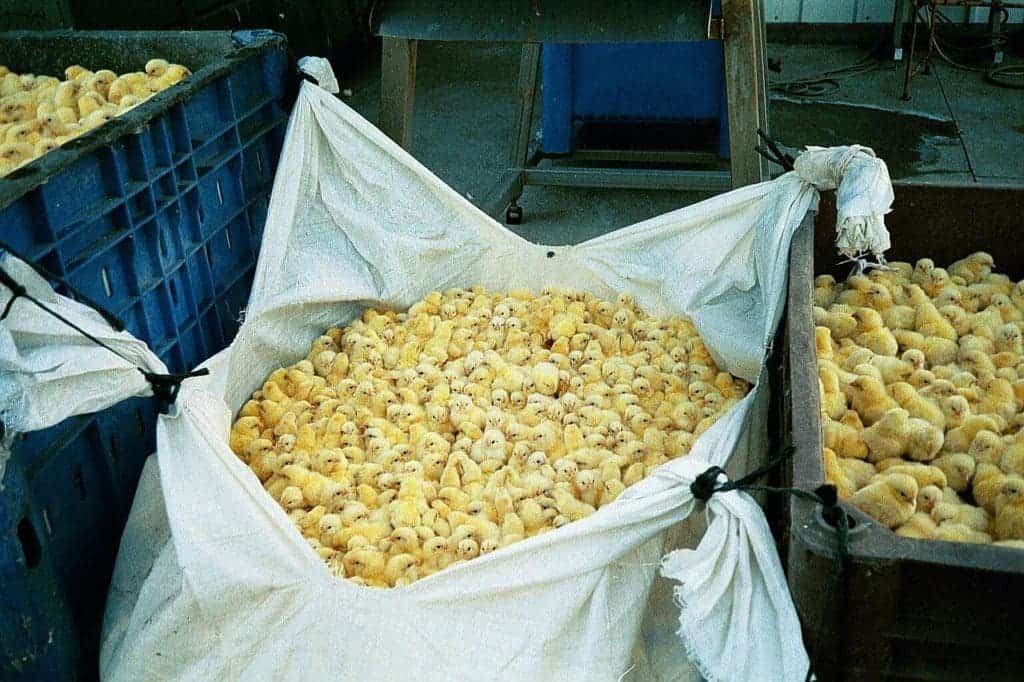In a victory against animal cruelty, the French agriculture minister Didier Guillaume announced that the practice of shredding live male chicks will be banned by 2021.

Intensive agriculture comes at a heavy cost. Sometimes, it’s deforestation and habitat destruction; other times, it’s the use of pesticides. Often, it’s the slaughter of billions of unneeded animals.
Chick culling has become an integral part of chicken raising. It is the process of killing newly hatched chicks for which the intensive animal farming industry has no use — almost always, that’s male chicks.
The culling of male chicks is practiced in all industrialized egg production, whether free-range, organic, or battery cage — because they don’t produce eggs. Sometimes, male chicks are used for fertilizing programs, but that only makes for a small percentage.
For the most part, the male chicks are killed (though in foie gras production, male ducks and geese tend to put on more weight, so females are culled).

Most of the time, the culling process does not involve any anaesthetics. Culling methods include cervical dislocation and asphyxiation — but most often, live chicks are macerated through a high-speed grinder. Millions and millions of chicks are slaughtered this way every year.
But in France, at least, this will soon stop.
“From the end of 2021, nothing will be like it was before,” agriculture minister Didier Guillaume said on Tuesday in Paris as he announced the measure long demanded by campaigners.
A better way
France isn’t the first country to ban chick male shredding. Switzerland banned mechanical chick shredding last year, though the practice was already pretty rare in the country. Chicks in Switzerland were, and will continue to be slaughtered through other methods. But in France, things are much more ambitious, government officials have announced — it’s not just the mechanical shredding that will be banned, but all unnecessary culling.
“We want to move forward, there’s no going back. The government is committed to it,” minister Guillaume said at a press conference. “The aim is to oblige firms to do this by the end of 2021. We need to find a method that works on a large scale.”

The decision is based on improving diagnosis techniques. Several technologies have been developed to determine the sex of a chick before hatching. The methods rely on spectroscopy, chemical tests, or other types of imaging. The sex of the chick can be determined within 4-9 days of laying — sufficient time to determine which eggs will be allowed to hatch and which not, without incurring any suffering.
Other genetic methods also exist, such as engineering male eggs to become fluorescent.
These methods have gained increasing traction in recent years, not only from those advocating against animal cruelty, but also from farmers themselves, as the methods can reduce costs associated with culling.
Guillaume says that he wants to push a method that would allow farmers to make this detection in a cost-efficient way.


